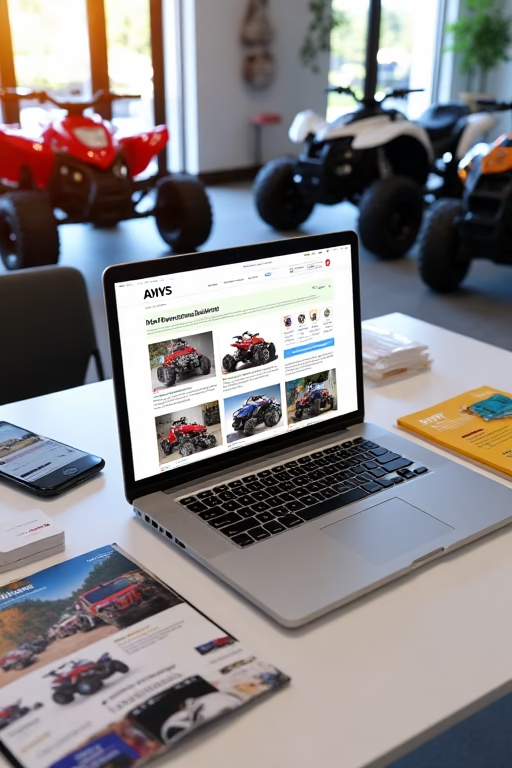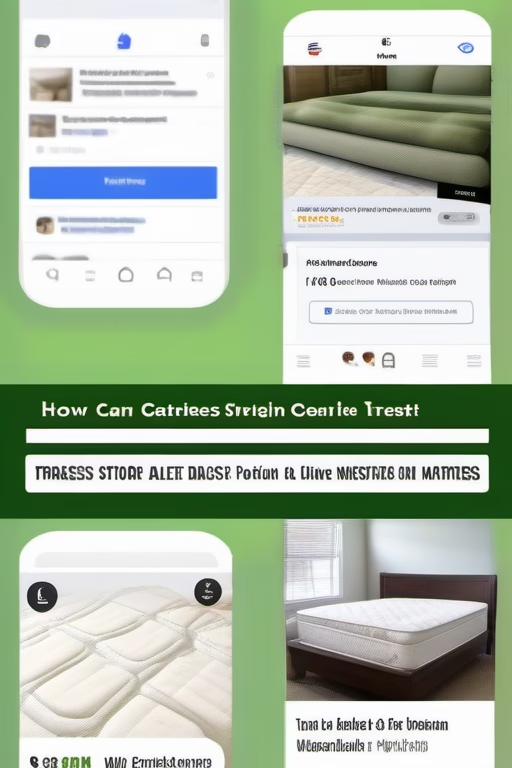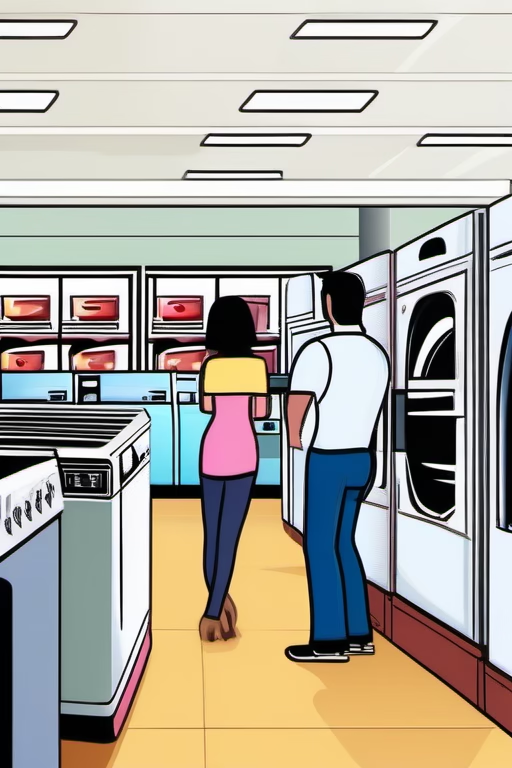How to Create Irresistible Online Listings for ATVs
Selling ATVs online can be highly profitable, but competition is fierce. The first step to capturing a buyer’s attention and standing out from a sea of listings is to create an irresistible ATV listing. By showcasing your ATV’s best features, setting a fair price, and crafting a compelling description, you can attract serious buyers and streamline the sales process. This guide provides detailed, practical advice on how to build the kind of online ATV listing that motivates buyers to reach out, ask for test drives, and make an offer.
In this comprehensive guide, we will cover:
- The key components of an outstanding ATV listing
- Tips for taking high-quality photos and videos
- Strategies for writing engaging and informative descriptions
- Pricing insights and negotiation best practices
- Case studies of successful ATV listings
- Frequently asked questions about ATV listings
- Essential keywords to optimize your listings for search
Table of Contents
- 1. Why an Irresistible ATV Listing Matters
- 2. Keys to Compelling Visuals
- 2.1 ATV Photography Best Practices
- 2.2 Video Tours and Walkarounds
- 2.3 Maintaining Consistent Branding
- 3. Writing Effective ATV Descriptions
- 3.1 Keyword Inclusion for Search Visibility
- 3.2 Structuring Your Listing Information
- 3.3 Highlighting Unique Selling Points (USPs) and Value
- 4. Pricing Strategy and Negotiation
- 5. User Experience and Listing Accessibility
- 5.1 Ensuring a Mobile-Friendly Listing
- 5.2 Messaging and Inquiry Set-Up
- 5.3 Clear Calls-to-Action (CTAs)
- 6. Success Stories and Case Studies
- 7. Measuring Performance and Continuous Improvement
- 8. Common Mistakes to Avoid
- 9. Conclusion
- 10. Frequently Asked Questions (FAQ)
- 11. 25 Additional Keywords
1. Why an Irresistible ATV Listing Matters
With countless online marketplaces and social media platforms, buyers have abundant options when searching for their next ATV. Creating a listing that instantly captures attention and conveys trust is vital for driving inquiries and sales.
1.1 Standing Out in a Competitive Market
The ATV market is fiercely competitive, especially during peak seasons. Buyers typically scroll through multiple listings in a short time, so your listing must differentiate itself with:
- High-Quality Images: Crisp photos that showcase the ATV’s best angles and features.
- Attention-Grabbing Titles: Concise yet descriptive titles that highlight model, year, or unique modifications.
- Immediate Value Proposition: A short summary that tells the buyer why your ATV is special or better than others.
- Example: A listing title could read, “2021 High-Performance 4x4 ATV | Low Hours & Upgraded Exhaust.” This quickly signals quality and unique selling points.
1.2 Making a Powerful First Impression
Research shows that buyers often form opinions in seconds. A professional, well-structured listing fosters credibility and nudges them to learn more.
- Consistent Branding: If you’re a dealership, ensure listings share your brand’s color scheme, logo, and contact details.
- Uniform Presentation: Keep your tone, image style, and listing layout consistent across all ATVs.
- Transparency: Provide relevant details like maintenance records or recent upgrades to demonstrate honesty.
- Example: A private seller who mentions “Professionally Serviced,” “All Maintenance Records Available,” and “Garage Kept” reassures potential buyers of the ATV’s reliability.
2. Keys to Compelling Visuals
High-quality visuals can make or break your ATV listing. Buyers rely heavily on images and videos to assess condition, modifications, and aesthetic appeal before even reading the description. Ensuring your visuals resonate with them is a crucial step.
2.1 ATV Photography Best Practices
Good photography doesn’t necessarily require professional equipment, but it does need thoughtful composition, lighting, and clarity.
- Multiple Angles: Photograph the ATV from the front, back, sides, and top. Include close-ups of critical areas like the engine, tires, and seat.
- Clean Background: Shoot against a neutral or uncluttered background to keep the focus on the ATV.
- Natural Lighting: Outdoor lighting during morning or late afternoon can highlight details without harsh shadows.
- Example: Show the ATV in a field or driveway, free of extraneous objects, capturing both close-up and wide shots for context.
2.2 Video Tours and Walkarounds
Video tours bring static images to life, offering a 360-degree perspective. A short, well-edited clip can answer buyer questions and build trust.
- Walkaround Footage: Record a smooth walkaround, pausing at vital points like the exhaust, suspension, and dashboard.
- Startup and Idle: Show the ATV starting up and idling to highlight any custom exhaust notes or engine smoothness.
- Optional Ride Demonstration: If safe and permissible, a short ride snippet demonstrates handling and performance.
- Example: An online listing with a 2-minute video showcasing the ATV’s engine revving, each gear shift, and comfort can stand out in a buyer’s memory.
2.3 Maintaining Consistent Branding
For dealerships, consistent branding across visuals builds recognition and professionalism. Even private sellers can benefit from a unified look and feel if they plan to sell multiple vehicles over time.
- Watermarks or Logos: Place a subtle watermark or corner logo on photos for brand awareness and theft deterrence.
- Consistent Filters or Editing: If using filters, keep them mild and consistent across images so they look cohesive.
- Example: A dealership can brand images with a small, transparent logo, reinforcing brand identity while showcasing each ATV’s unique features.
3. Writing Effective ATV Descriptions
A strong description compliments your visuals and seals the deal. Potential buyers often skim listings, so structure your information for clarity and persuasive impact.
3.1 Keyword Inclusion for Search Visibility
Using relevant keywords in your listing improves discoverability on platforms that have search functionalities. This includes general terms like “ATV for sale” and brand- or model-specific terms.
- Model Specifics: If you’re selling a Yamaha Raptor 700, mention “Yamaha Raptor 700” multiple times naturally in the listing.
- Synonyms: Terms like “quad,” “4-wheeler,” or “4x4 ATV” can help catch broader queries.
- Location Keywords: Adding location-based keywords (e.g., “ATV in Texas”) can help local buyers find you easily.
- Example: “Up for sale is a 2020 Yamaha Raptor 700R, 4x4 ATV in excellent condition, perfect for off-road adventures around the Texas trails.”
3.2 Structuring Your Listing Information
A well-organized listing is easier to scan and fosters trust. Provide essential details in clear sections or bullet points, guiding potential buyers from basic to advanced info.
- Headline/Title: Summarize the most crucial info—brand, model, year, key features, or upgrades.
- Condition/Mileage: Mention hours used or miles, especially if it’s significantly low or you have documented maintenance.
- Specifications/Upgrades: List engine size, horsepower, tires, modifications (exhaust, suspension), or accessories (winch, racks).
- Usage History: Provide short background—“Used primarily for farm chores,” “Weekend trail riding only,” or “Never used for racing.”
- Example: A clean format might have sub-headings: “Introduction,” “Key Features,” “Maintenance Records,” “Reason for Selling,” “Price and Contact Info.”
3.3 Highlighting Unique Selling Points (USPs) and Value
Distinguish your ATV from others with compelling details about why it’s worth the asking price. This could be brand reputation, rare color schemes, custom modifications, or recently replaced parts.
- Brand and Model Reputation: If your model is known for reliability or performance, emphasize that. E.g., “Yamaha’s widely respected reliability ensures minimal downtime.”
- Recent Improvements: “Brand-new tires,” “fresh oil change,” or “upgraded suspension.”
- Accessories Included: A cover, extra set of tires, or mounted camera can add perceived value.
- Example: “Comes with upgraded Fox Racing shocks, brand-new Maxxis tires, and a digital LCD dash—making it ideal for any off-road enthusiast.”
4. Pricing Strategy and Negotiation
Pricing remains one of the most critical factors influencing a buyer’s decision. Finding the sweet spot requires researching comparable models, factoring in your ATV’s condition and upgrades, and preparing for back-and-forth negotiations.
4.1 Research and Comparison
Explore similar ATV listings on platforms such as Facebook Marketplace, Craigslist, or specialized off-road forums. This helps you gauge the going rate and set a competitive, realistic price.
- Local vs. Nationwide: Local markets can vary, especially if there’s limited supply or strong demand in your area.
- Condition-Based: Adjust for condition, hours, or miles used. Also account for brand popularity and overall market trends.
- Example: If a same-year, same-model ATV typically sells for \$4,500 in your area, listing at \$4,200 might attract quick offers, whereas \$4,700 might require justification (like new parts).
4.2 Setting the Listing Price
Consider setting your listing price slightly above your bottom line if you anticipate negotiation. This provides a buffer without alienating buyers who expect a bit of a deal.
- Negotiation Buffer: Listing 5-10% above your minimum acceptable price can preserve your profit margin after typical “haggling.”
- Transparent vs. Firm Pricing: If you’re firm on price, mention it up front to deter low-ballers, but remain open to minor negotiation if it seals the sale.
- Example: For a well-maintained ATV you’d be happy selling at \$3,500, list around \$3,800, expecting to settle near \$3,500-3,600 after negotiation.
4.3 Anticipating Offers and Counteroffers
Be prepared for a range of offers—some might be unreasonably low, others might be close to your target. Negotiation skills can make the difference between an extended listing and a quick, profitable sale.
- Polite Declines: Reject absurdly low offers firmly yet courteously, preserving your seller reputation.
- Highlight Value: Counter with references to your ATV’s condition, upgrades, or additional accessories that justify your counteroffer.
- Example: If someone offers \$2,800 on a \$3,800 listing, respond with, “I appreciate the offer. Given the new tires and recent service, the lowest I can consider is \$3,400.”
5. User Experience and Listing Accessibility
Ensuring a seamless user experience helps prospective buyers focus on your ATV rather than struggling with awkward navigation or slow loading times. This applies to both private sellers using social platforms and dealerships running their own websites.
5.1 Ensuring a Mobile-Friendly Listing
A large portion of online buyers browse on smartphones or tablets. If your listing doesn’t display properly on mobile, you risk losing leads to frustration or confusion.
- Responsive Layouts: On your website, use mobile-responsive templates or themes that adjust to different screens.
- Platform-Specific Formatting: If using Facebook Marketplace or other apps, confirm your text and images appear crisp in mobile previews.
- Short Blocks of Text: Keep paragraphs concise and scannable for small-screen reading.
- Example: A listing with bullet points summarizing key details is more mobile-friendly than a continuous text block requiring extensive scrolling.
5.2 Messaging and Inquiry Set-Up
The ease with which buyers can reach you significantly impacts your listing’s effectiveness. The simpler the contact process, the more inquiries you’ll receive.
- Direct Contact Options: Provide multiple channels—phone number, email, direct messaging, or platform-based chat—for buyer convenience.
- Auto-Replies (If Available): Some platforms allow an auto-response if you can’t immediately reply, acknowledging the inquiry.
- Example: “Message me here or text me at 555-1234 for a quick response!” fosters immediate trust and approachability.
5.3 Clear Calls-to-Action (CTAs)
A CTA encourages the buyer to take the next step—whether that’s asking a question, scheduling a test ride, or purchasing. Don’t leave them guessing on how to proceed.
- Test Drive CTA: “Call now to arrange a test ride or request more pictures.”
- Pre-Order CTA: If selling new or upcoming models, “Secure yours with a small deposit now!”
- Example: A private seller might end the listing with, “Ready to hit the trails? Message me today to schedule a test drive or make an offer!”
6. Success Stories and Case Studies
Real-world examples illustrate how effective listing strategies can dramatically improve sales outcomes. Below are two brief case studies: one from a private seller’s viewpoint and another from a dealership scenario.
6.1 Private Seller Triumph
A private seller in a rural area listed their barely-used ATV with 10 high-quality photos, a short walkaround video, and a thorough description focusing on recent maintenance. The seller priced it slightly above market value but emphasized the recent engine service and brand-new tires. Within a week, the listing attracted numerous inquiries, and the ATV sold near asking price to a buyer swayed by the listing’s professional presentation.
- Key Takeaway: High-quality visuals, emphasized USPs, and minor negotiation flexibility can lead to a quick, profitable sale.
6.2 Dealership Case Study
An ATV dealership struggling with stagnant listings decided to revamp all online postings. They used uniform branding, professional photography, short ride videos, and detailed bullet-point descriptions. Additionally, they implemented a “Click-to-Schedule” feature for test rides. The result was a 35% increase in inquiries, a 20% reduction in average days on market, and improved customer feedback praising the helpful online listings.
- Key Takeaway: Consistency and clarity across multiple listings with a user-centric approach can significantly lift sales performance and brand reputation.
7. Measuring Performance and Continuous Improvement
Regularly assessing how well your listings perform is vital for long-term success. By tracking key metrics and responding to buyer feedback, you can make incremental improvements that yield better results over time.
7.1 Key Metrics to Track
Monitoring metrics helps you spot trends, replicate successes, and correct any shortcomings:
- Views/Impressions: How many people see your listing, crucial for measuring your ad’s reach or platform’s audience.
- Inquiries/Leads: The number of messages, calls, or emails about the ATV indicates initial buyer interest.
- Conversion Rate: The ratio of inquiries to closed deals, reflecting listing quality and negotiation effectiveness.
- Time on Market: How long it takes from listing to sale can inform if your price or listing approach needs adjustment.
7.2 Feedback Loops and Optimizations
Buyer inquiries or comments often contain hints about what’s missing in your listing—perhaps more details, better photos, or updated pricing. Use this feedback to refine your approach.
- Regular Updates: If you keep receiving the same questions, incorporate those answers into your listing’s description or FAQ sections.
- A/B Testing: Experiment with different listing titles or main cover photo angles to see which yields more inquiries.
- Example: If multiple buyers ask about top speed or towing capacity, updating your listing with that data preempts repeated questions and increases confidence.
7.3 Iterative Listing Approaches
Don’t hesitate to adjust your listing mid-way if results are underwhelming. Refreshing content, photos, or pricing keeps it relevant and regains potential buyer interest.
- Revise Copy: If your description is too short or generic, expand with more detail or personality.
- Photo Refresh: Remove less flattering images, add new angles, or feature the ATV in a more scenic environment.
- Price Adjustments: Slight price changes can generate new interest from watchers or those waiting for a better deal.
- Example: Re-listing or updating your ATV ad with improved visuals or a small discount can re-engage watchers who didn’t bite the first time.
8. Common Mistakes to Avoid
Even well-intentioned sellers can sabotage their listings by making avoidable errors. Steer clear of these pitfalls to maintain a professional, attractive, and trust-inspiring listing.
- One or Two Low-Quality Photos: This rarely instills confidence. Always aim for multiple angles with good lighting.
- Overly Long or Chaotic Descriptions: Buyers may skip or gloss over critical details if the text is unorganized.
- No Clear Contact Method: A missing phone number or email can deter serious buyers who prefer direct communication.
- Unrealistic Pricing: Underpricing raises suspicions, overpricing deters serious buyers. Always research market norms.
- Lack of Updates: Keeping stale listings that mention outdated info (like a “holiday sale” from three months ago) reflects poorly on your attention to detail.
9. Conclusion
Creating irresistible online listings for ATVs isn’t merely about flashy photos—it’s a combination of polished visuals, thorough descriptions, fair pricing, and proactive buyer engagement. By following the best practices in this guide—from capturing comprehensive photos and videos, weaving in relevant keywords, structuring the description effectively, to regularly refining your approach—you can stand out in a crowded digital marketplace.
Remember to continually track your performance metrics, respond swiftly to inquiries, and incorporate buyer feedback. Whether you’re a private seller or a dealership, these strategies will help transform casual browsers into enthusiastic ATV owners. With an optimized, enticing listing, you can drive more leads, speed up the sales cycle, and ultimately command better prices for your ATVs.
10. Frequently Asked Questions (FAQ)
1. Why do I need multiple angles in my ATV listing photos?
Multiple angles help buyers assess the ATV’s condition and unique features, boosting transparency and trust. Photos from different perspectives, including close-ups, provide a comprehensive overview of your vehicle.
2. How do I determine the right price for my ATV?
Research similar ATV models in your local market, consider the condition, mileage/hours, brand popularity, and any upgrades. Setting a slightly higher listing price than your bottom line allows room for negotiation.
3. Should I include a video in my ATV listing?
Yes, a short, well-produced video demonstrating the ATV’s performance or a simple walkaround adds credibility and allows buyers to visualize ownership more concretely.
4. Is it beneficial to mention maintenance records in my listing?
Absolutely. Highlighting available maintenance records and consistent servicing significantly reassures buyers, indicating proper care and reducing perceived risk.
5. What’s the advantage of using brand-specific or model-specific keywords?
Buyers often search for ATVs by brand and model. Using terms like “Polaris Sportsman 450” or “Honda FourTrax” helps your listing rank higher in search results.
6. How do I handle inquiries from buyers who only send low-ball offers?
Reply politely, thanking them for their interest, and counter with a reasoned price. Remain respectful, as some low offers may still escalate to an acceptable figure with negotiation.
7. What details should I include in my ATV listing description?
Key details include the brand, model, year, condition, hours or mileage, upgrades, accessories, any modifications, maintenance history, and reason for selling. Clearly structured bullet points help readability.
8. Are extended warranties or service plans appealing to buyers?
Yes, offering or mentioning a transferable warranty or service plan can differentiate your ATV, emphasizing reliability and reducing buyer worry.
9. Can I sell multiple ATVs in one listing?
It’s generally better to list each ATV separately for clarity. Individual listings let you highlight each vehicle’s unique features and price point more effectively.
10. What if I don’t have professional photography equipment?
You can still get good results using a smartphone camera, natural lighting, and attention to composition. Focus on cleanliness, background, and shooting at the right time of day.
11. Should I provide my phone number or just use platform messaging?
While platform messaging is convenient, offering a phone number can attract serious buyers who prefer direct, faster communication. It’s a matter of personal comfort and safety preferences.
12. Is it worthwhile to list ATVs on multiple online marketplaces?
Yes, cross-listing on popular platforms (Facebook Marketplace, Craigslist, ATV-specific forums) can widen your audience. However, keep listings updated to avoid confusion.
13. How do I handle test drive requests safely?
Meet in a secure location, ask for a valid driver’s license, and ensure potential buyers have some riding experience. Set boundaries on the test ride route to reduce risks.
14. Can I add a custom watermark with my dealership name on listing photos?
Yes, especially for dealerships, a subtle watermark or logo can reinforce your brand while discouraging unauthorized reuse of images.
15. What if my listing isn’t getting any views or inquiries?
Refresh your listing with new photos, revise the title, adjust the price, or promote it on additional platforms or relevant social media groups. If the price is too high, consider lowering it slightly.
16. How many photos should I include for the best results?
Between 8 to 12 high-quality images typically suffice, showing all angles, key features, and close-ups of important parts or modifications.
17. Should I mention why I’m selling the ATV in my listing?
Providing a brief, honest reason (e.g., upgrading to a newer model, no longer have time to ride) can add transparency and reduce buyer skepticism.
18. How do I politely decline test rides if I’m not comfortable with them?
State up front in your description or in your replies that test rides are not available, or only permissible with a cash deposit or proof of insurance. Courtesy is key to maintain goodwill.
19. What if my ATV is heavily customized? How do I convey its value?
Emphasize the brand-name parts, receipts, and any professional installation or dyno results. Explain performance gains, reliability improvements, or aesthetic benefits that justify higher pricing.
20. Can I list ATVs without a dealership license?
This depends on local laws. Private sellers are usually fine; however, consistently selling multiple vehicles might require a dealer license. Check your state’s regulations.
21. Is it smart to mention possible financing or trade options?
Yes, potential buyers might be more inclined to contact you if you offer flexible payment or are open to trading for something of similar value. Specify your terms clearly.
22. How often should I renew or bump my online ATV listing?
Renewing or bumping your listing every few days to a week helps maintain visibility, especially on platforms like Craigslist or Facebook Marketplace where new posts appear first.
23. How can I ensure safe transactions for higher-priced ATVs?
Encourage secure payment methods (bank checks, online escrow, or wire transfers). Validate buyer credentials and consider meeting in public or well-monitored locations. Document the sale with a written contract or bill of sale.
24. Should I advertise warranties or service plans for used ATVs?
If available or transferable, definitely mention them. Warranties and extended service plans can significantly increase buyer confidence in used ATVs.
25. What post-sale follow-ups can I do to encourage good reviews?
Send a polite thank-you message, ask if the buyer is satisfied with the purchase, and encourage them to leave positive feedback or share their experience, thereby strengthening your seller profile for future listings.
11. 25 Additional Keywords
- ATV Online Listings
- Sell ATVs
- ATV Listing Tips
- ATV Marketing Strategies
- Irresistible ATV Ads
- ATV Buyer Engagement
- Powersports Online Sales
- ATV Photography Tips
- ATV Descriptions
- ATV Pricing Strategy
- ATV Seller Guide
- Online Marketplace ATVs
- ATV Social Media Marketing
- ATV Listing SEO
- ATV Buyer Behavior
- High-Ticket ATV Sales
- ATV Dealer Tips
- Best Practices ATV Listings
- ATV E-commerce
- ATV Digital Marketing
- Powersport Vehicles Listing
- Attracting ATV Buyers
- ATV Launch Strategy
- ATVPro Listings
- Off-Road Vehicle Sales

















